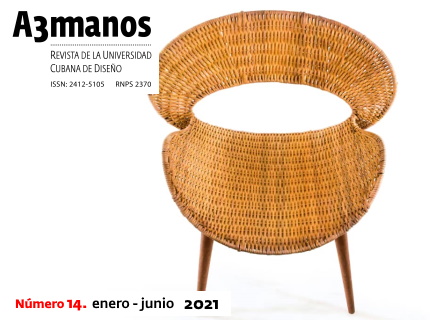The poster and its relationship with the avant-garde and artistic movements of the first half of the 20th century.
##plugins.themes.bootstrap3.article.main##
Abstract
This text is part of the doctoral research project "The Colombian advertising poster: the modernization of Cali through the stamp (1910-1944)", in which the hypothesis of assuming the advertising poster as a window and mirror for approach and read the modernizing process experienced by this Colombian city in the first half of the 20th century. Thus, it is intended to critically investigate how and why posters are configured as cultural objects, fruits of a time and reference of an era, which had a very close relationship with the art scene of the beginning of the last century. The historiographic intentions of this proposal are defined from the approach to the place of production of the posters, conditions that determine the construction of a discourse and that support the interpretive action of social products based on the multiple particularities that define them. (De Certeau, 1994: 221). In this way, an interpretive exercise is carried out (from where it is read) that understands history as a story, method and representation of a time to approach the past through a practice, articulating the form and content of the advertising poster as an input and historical document, providing data on the place, setting and epochal conditions of the source (Koselleck, 1993: 185). For this reason, this proposal deals with the emergence of the advertising poster as a cultural object of the bourgeoisie, developing from its beginnings in full industrialization as a commercial art closely linked to the artistic processes of that time, which highlighted a close relationship between the poster with the artistic avant garde of the early twentieth century.
##plugins.themes.bootstrap3.article.details##

This work is licensed under a Creative Commons Attribution-NonCommercial-ShareAlike 4.0 International License.
- Attribution — You must give appropriate credit , provide a link to the license, and indicate if changes were made . You may do so in any reasonable manner, but not in any way that suggests the licensor endorses you or your use.
- NonCommercial — You may not use the material for commercial purposes .
- No additional restrictions — You may not apply legal terms or technological measures that legally restrict others from doing anything the license permits.
- ShareAlike — If you remix, transform, or build upon the material, you must distribute your contribution under the same license as the original. NOTE: This point applies to numbers 1 to 20 of the magazine with the previous CC-BY-NC-SA 4.0 license. Does not apply to the new CC BY-NC 4.0 license from Volume 11, Number. 21 (2024).
References
Barnicoat, J. (2000). Los carteles, su historia y su lenguaje. Barcelona: Editorial Gustavo Gili.
Bermúdez, D. (2016). "Nuestros primeros diseñadores: pioneros del diseño gráfico en Colombia y el Valle del Cauca". En: Designa 2016, International Conference on Design Research. Book of abstracts. Covilha: Universidade da Beira Interior, pp. 70-71.
Checa, A. (2014). El cartel: dos siglos de publicidad y propaganda. Sevilla. Advook
Editorial.
Checa, A. y Garrido (2017). Teoría e historia del cartel publicitario. Madrid: Editorial Síntesis.
Coronado, D. (2012). La metáfora del espejo. Teoría e historia del cartel publicitario. Sevilla: Ediciones Alfar.
De Certeau, M. (1994). La escritura de la historia. México: Universidad Iberoamericana.
Duncan, A. (1994). El Art Déco. Barcelona: Ediciones Destino.
Koselleck, R. (1993). Futuro pasado. Madrid: Paidós.
Meggs, P. (2000). Historia del diseño gráfico. México: McGraw-Hill.
Müller-Brockmann, J. (1998). Historia de la comunicación visual. Barcelona: Editorial Gustavo Gili.
Weil, A. (2015). L’Affiche au temps de’l Art Nouveau. París: Éditions Hazan.






















